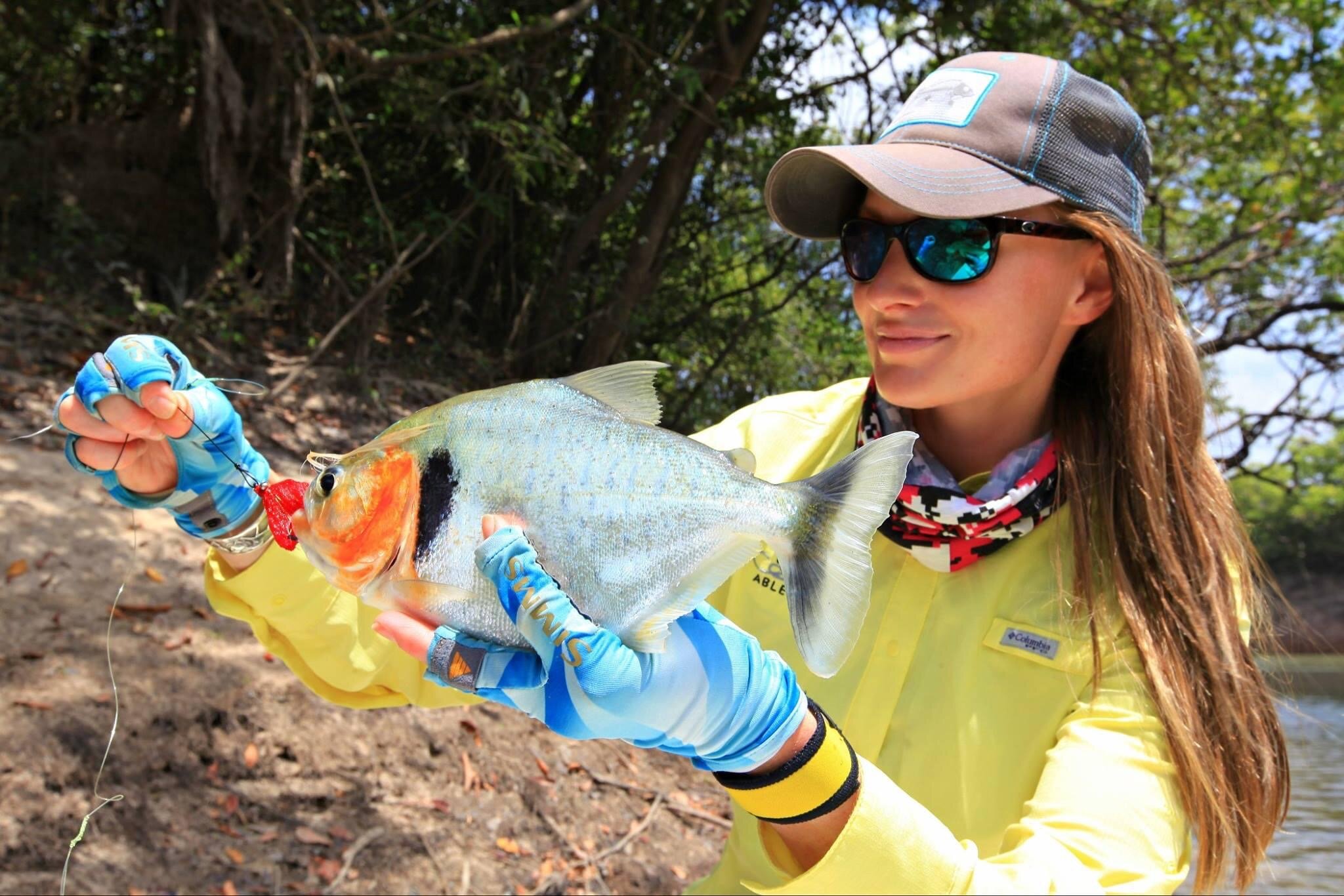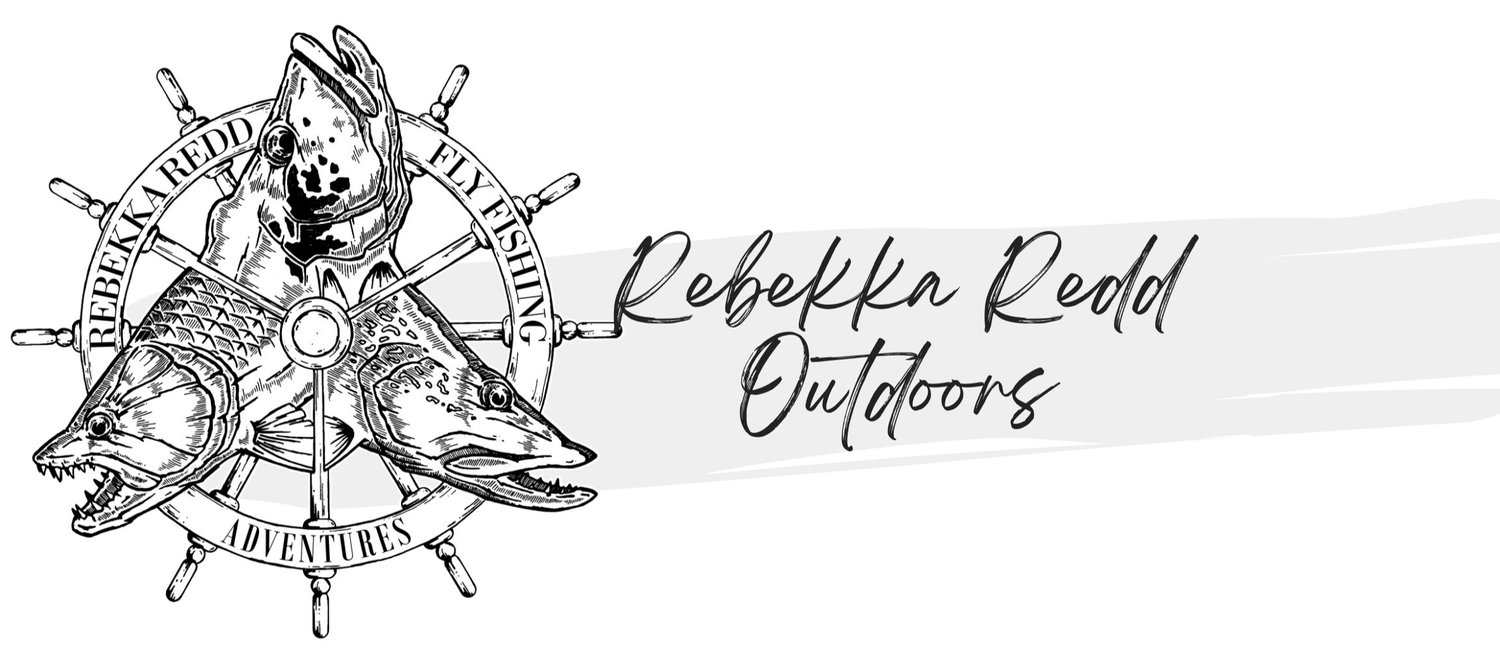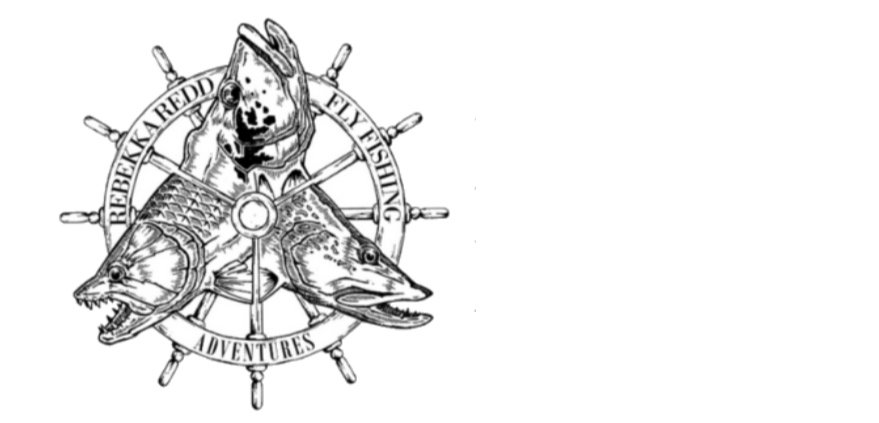

























































Colombia
With traveling angler Rebekka Redd
What once began as a casual conversation between friends somehow morphed into an expedition into the jungle in search of peacock bass and payara in untouched waters. I was honoured to have Mens Journal magazine accompany us for this mission as they documented the trip and fly fishing dreams came true as I hooked and landed some of the best behemoth fish of the year for me and that trip.
Great people, exotic fish, and a remote, wild setting – how can you ask for more?
This trip began with handshakes and hugs at a small airfield outside Bogota. I was met with a warm welcome and big smiles from our pilots, and fishing expedition partners Juan, Hans, Daniel, Gregg(photographer), Aaron and Bruce from the Mens Journal magazine.
As we hauled our gear to our aircraft Juan went over our flight plan and trip itinerary. We would be heading Northeast over the jungle canopy and landing in a field on a tract of private land in the Orinoco river basin just below the border between Colombia and Venezuela. A piece of land, my pilot and fishing buddy assured me “nobody ever fishes”. After landing, we would be taking a small boat to the landowner’s private cottage, which would be our base camp for the next several days. I climbed aboard the small rugged plane and as the engines roared to life the exhilaration took hold. We were heading on a search and destroy guerrilla mission for one of the toughest fish in the jungle.
The view of the jungle from the airplane was unbelievable. Green as far as the eye can see divided by snaking azure rivers. The Orinoco is one of South America’s longest river drainages and only a small portion of its headwaters are on Colombian soil. These waters are difficult to reach and require special permission to access, which keeps most anglers and outfitters restricted to the many tributaries and main stem of the river in Venezuela. Our winter here in Ontario corresponds with the main dry season in the region, making it prime time to target peacock bass while the rivers are low and fishable.
Our main target on this adventure was the speckled peacock bass, which is the largest of the subspecies and are known to be plentiful in great size in this river system. These fish are characterized by their dusky olive coloration and three prominent vertical bars along with trademark white speckles running their flanks. They average 6-8 pounds and can grow to enormous proportion, with the world record near 30 pounds. The watershed is host to several subspecies as well, including the smaller “butterfly” peacock and the wildly decorated “royal” peacock. All are incredibly aggressive, ferocious predators and put up a sensational fight on fly tackle.
My first look at the river was during our boat ride from the “air strip” which was really just a grassy opening in the trees. After an exciting landing we took off down river toward our camp. We roared down the narrow river channel past gnarled branches with singing macaws and bouncing monkeys. The dense canopy seemed to crawl right to the rivers edge, where it finally gave way to crystalline blue water. We wound around bend after bend dodging fallen logs and avoiding shallow sand bars while Daniel informed me about the river’s more dubious characters. “We have piranha, but they don’t bother you unless you bleed. However, you have to watch out for sting rays when you wade, and there are crocodiles and, electric eels and anaconda too! “ I wasn’t sure if he was having a laugh with me or giving me a warning, but it made the idea of wet wading for the next few days seem a bit mad.
By the time we arrived at camp I was anxious and ready to wet a line. We quickly unloaded and decided to spend a little time fishing before we got settled. Stepping into the bathtub warm water wearing nothing but sandals and lightweight pants / shirt , I thought about the piranhas, crocodiles, and anacondas Daniel assured me would be present, but the thought quickly evaporated with what came next. We waded chest deep—practically swimming—across a flat and then upstream to a shallow sandbar that ran alongside a deep hole with trees and logs along the far bank. “After you, Rebekka” Juan said with a grin as he waved his arm ceremoniously towards the fishy looking water. I loosened my fly–a near 10 inch blue and white baitfish imitation tied on a massive, sinister looking hook—and flung it out over the drop off, letting the sinking line carry it into the cloudy depths. One, two, three hard strips and my rod suddenly doubled over as if someone had attached my line to an anvil and threw it off the side of a building. The fish dove and ripped drag off my reel, which spun so violently it bruised my knuckles as I tried to catch hold of the handle. The fish tore and tore again, fighting like no freshwater fish I’ve ever experienced. After a short, but intense battle I held my very first peacock, even more beautiful than I had imagined or hoped. We all took turns hooking fish and slapping high fives until we were sore, hungry, and battle weary. Wading back that evening as the parrots and toucans called close by, I was on cloud nine. What an incredible place this truly was.
Back at camp I was pleasantly surprised with how comfortable our accommodations were, despite the rugged and isolated nature of our fishing location. A spacious outdoor kitchen awaited us where we drank cold drinks and cooked supper, a traditional Colombian meal called Bandeja Paisa. We might have stayed up and told fishing tales late into the balmy evening, but we were unanimously exhausted from the days exploits, and with full bellies we sank into our individual hammocks, falling asleep with a warm breeze stoking dreams of the giant peacock bass that surely swam in the river just a few hundred feet away.
The aroma of fresh Colombian brew stirred me awake the next morning and I stumbled into the kitchen to find my companions already busy fixing breakfast and buzzing about the days plan. We wasted no time getting down to the river, and began our trek upstream in search of the ultimate bass hideout. Throughout the day we stopped at every spot that looked like it might hold fish, and they were numerous. We hooked more fish than we could count, big ones, small ones, specimens with bright colours and unique patterning. Each struck the fly with vigour and fought hard to the end. We cast our flies as howler monkeys called and sang in the trees around us, a euphoric and otherworldly experience for this Northern girl.
The fishing went on this way for the remainder of the trip. It was really some of the best fishing I have ever experienced, and we all caught our fill, but each of us pressed on in search of a true giant, or “big mama” as Juan Carlos was fond of calling them. My most memorable fish was my largest, a true brute of a speckled peacock bass that pummelled a large red and white streamer as I stripped it over a deep sunken tree. My arms were so sore after the fight I could barely keep from shaking to get a picture. The heft and weight of that fish, its hot orange fins and big black tail spot will forever be etched in my mind. To be continued …..stay tuned for " the mighty vampire fish in the Colombian guerrilla jungle territory"
REDD’s Gear Guide:
Peacock Bass
Rod: 9’ 9 wt and 10wt high quality fly rod - med/ fast action -
Reel: Large arbor machined aluminum reel with a smooth drag and plenty of backing. Line: WF 9 and 10 wt tropical intermediate sinking line for fishing streamers and tropical floating line for poppers -
Leader: Short 7ft of 30# to 20# fluorocarbon with a Bimini twist shock leader. Ending in a coated wire tippet.
Flies – Large profile streamers worked best for us with blue over white and white with a red head being the top producers of the trip, but peacock bass will take a variety of streamers and top water flies. A good selection of streamers and big poppers in the 4-8” range with stout hooks in sizes 2/0-6/0 will do fine.

